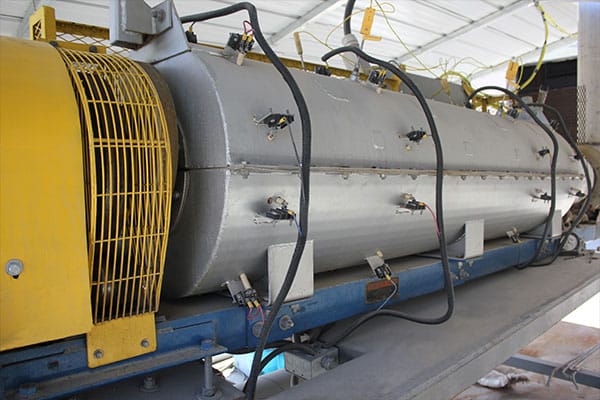In today’s industrial landscape, catalysts are essential for facilitating various processes, promoting sustainability, and reducing harmful emissions. However, the extensive use of catalysts leads to the generation of significant amounts of spent catalysts, which pose a unique set of challenges for waste management. As the trend shifts away from traditional disposal methods, industries are increasingly pressured to adopt more sustainable practices for managing spent catalysts.
This article explores the growing market for catalysts, the environmental risks associated with improper disposal, and the various innovative strategies available for recycling spent catalysts. By examining the potential for regeneration, recovery of valuable components, and beneficial reuse, we can better understand how these once-discarded materials can be transformed into valuable resources, ultimately contributing to a more sustainable future in industrial operations.
Why Recycle Spent Catalysts?
Catalysts continue to play a growing role in modern industry, carrying out an array of processes that otherwise might not be possible, promoting more sustainable industries through efficient processing, reducing toxic emissions, and more.
The prolific use of catalysts generates significant quantities of spent catalysts, requiring a strategic waste management plan for anyone utilizing them. This is problematic for a number of reasons.
First and foremost, disposal of any type of “waste” is generally falling out of favor as the primary approach to waste management. Across industries, producers are under a growing amount of pressure to find more sustainable alternatives to disposal, and catalysts have certainly not been spared by this movement.
Additional drivers are also contributing to the push for better management of spent catalysts:
A Growing Market
A recent market report predicted that the catalyst market will witness a CAGR of 4.6% between 2024 and 2030.[1] As catalysts are expected to play an increasingly important role in society, environmentally friendly approaches to spent catalyst management are becoming a key focus of both industry and environmentalists.
The oil and gas industry is particularly affected, as this industry has not only produced greater amounts of spent catalysts in recent years, but also because the trend toward heavier crude oils is reducing catalyst lifespan, equating to more frequent catalyst replacement.
More Than a Waste
As with most industrial waste streams, spent catalysts are beginning to gain recognition as a potential resource; many catalysts contain valuable components that could be recovered and reused. This could not only help to offset catalyst replacement costs, but would also reduce the need to produce or extract virgin resources – a potentially major environmental benefit.
Environmental Risks
Depending on the application in which they were used, spent catalysts may be laden with anything from metals to hydrocarbons, many of which pose potential environmental threats if not properly managed.
One of the most widely recognized examples of this comes from the oil and gas industry, where spent catalysts are designated a hazardous waste by the EPA. As such, spent catalysts in this sector are governed by strict regulation and expensive waste management protocols.
In addition to making disposal more complicated and costly, spent catalysts containing potentially harmful components also represent a long-term liability to the company.
Better Options for Managing Spent Catalysts
The many problems associated with disposal have continued to push the industry to search for more sustainable spent catalyst management options in recent years. These options are explained here.
Catalyst Regeneration
Catalyst regeneration, or the reactivation of the catalyst, is the most attractive approach for most processors, as it not only lessens the burden of waste management, but it also reduces the need to purchase new replacement catalysts – a costly investment.
Regeneration essentially reactivates the catalytic activity so that the catalyst may be used again. Many avenues to regeneration exist, with thermal desorption in a rotary kiln being a common approach.
Since catalytic activity cannot be restored 100% through regeneration, however, each time a catalyst undergoes regeneration it has a slightly lower catalytic activity than before, eventually requiring the catalyst to be replaced.
Recovery of Valuable Components (Recycling)
When regeneration is not an option, catalyst recycling provides another avenue to value recovery.
As mentioned, catalysts can contain a range of valuable components, either as deposited materials, or as the catalyst support. This often includes alumina and various metals such as cobalt (Co), nickel (Ni), vanadium (V), and more – all of which hold value if recovered.
Various approaches to recovery exist, falling into either the hydrometallurgical or pyrometallurgical categories. Rotary kilns, already a widely accepted approach to metal recovery, are being used in the effort to recover metals from spent catalysts, as they can volatilize the organic components, leaving behind the metals.
Beneficial Reuse
Some spent catalysts may hold value as a raw material in another process, or in the preparation of a new catalyst, allowing processors to recover some value from the waste in this way as well.
Depending on the properties of the catalyst, this might include fused alumina, abrasive materials, sorbents, anorthite glass-ceramics, and more.[2]
In hydroprocessing, one technique used to extract maximum value from catalysts is known as cascading – the practice of reusing regenerated catalysts in successively lower-demand applications.
In other cases, spent catalysts may be eligible for use in the construction industry.
Development of Better Catalysts
While not necessarily an immediate option, one important approach to consider is the development of better catalysts.
Researchers and scientists continue to work on improving catalysts through enhanced specificity and life span. Catalysts with a longer life would not necessarily eliminate the waste management problem, but would alleviate some of the pressure.
Developing a Spent Catalyst Reuse or Recovery Process
It’s important to recognize that the options available to any given producer may differ depending on their specific catalyst and its composition after use. Further, processors may find they can extract the most value by combining approaches, for example, regenerating the catalyst until it is no longer useful and then recovering any valuable components.
Through the use of batch- and pilot-scale test kilns in the FEECO Innovation Center, the intended process can be evaluated to assess feasibility and then identify the specific process parameters required to reach the desired results.

Pilot-scale test kiln used for process development testing in the FEECO Innovation Center
Other processing techniques useful in the reuse of catalysts in other industries can also be evaluated, including drying, mixing/conditioning, impregnation, and agglomeration/granulation.
Conclusion
Like many other “wastes,” spent catalysts present waste management challenges when they could instead offer value through alternative approaches to disposal – chiefly through regeneration, recycling, and beneficial reuse, in addition to the ongoing development of improved catalysts.
FEECO provides custom rotary kilns for the regeneration and recovery of materials from spent catalysts. Our specialized testing facility offers various batch and pilot kilns to evaluate the intended process and gather the data necessary for the design of commercial-scale equipment. We also have an extensive line of parts and service for keeping catalyst kilns running their best. For more information on our spent catalyst capabilities, contact us today!
SOURCES:
- Grand View Research. (n.d.). (rep.). GVR Report cover Catalyst Market Size, Share & Trends Report Catalyst Market Size, Share & Trends Analysis Report By Raw Material (Chemical Compounds), By Product by Application (Heterogeneous, Homogeneous), By Region, And Segment Forecasts, 2024 – 2030. Retrieved October 7, 2024, from https://www.grandviewresearch.com/industry-analysis/catalyst-market.
- Yang, Changyan. (2018). Sustainable Management of Spent Hydroprocessing Catalyst. Trends in Renewable Energy. 4. 90-95. 10.17737/tre.2018.4.1.0061.

